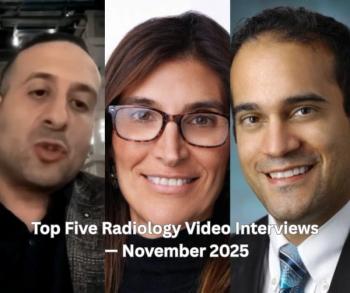
Which Phase Produces Interpretation Errors in CT Colonography?
Experienced and inexperienced radiologists had similar eye tracking, so errors may be occurring during other phases of the study.
Experienced and inexperienced radiologists had similar eye tracking characteristics when conducting endoluminal 3D computed tomography (CT) colonographic videos, indicating that interpretation errors may be occurring during other phases of the imaging study.
“Time to first pursuit, a key measure used to distinguish experienced from inexperienced readers in studies regarding 2D imaging, was the only metric that differed significantly between these groups,” wrote Susan Mallett, DPhil, of University of Oxford, and colleagues in
According to the authors, the analysis of metrics to quantify visual perception during interpretation of 3D videos allows the examination of “visual behavior patterns and their variation across readers and videos and to compare experienced and inexperienced readers.”
The interpretation of 3D images from CT colonography is difficult and prior research has shown that more experienced readers are more accurate than inexperienced readers.
In this study, the researchers sought to determine if tracking eye gazing may help to understand the discrepancy between experienced and inexperienced readers. The study included 65 radiologists, 27 of which were experienced in CT colonography. Radiologists were asked to interpret 23 endoluminal 3D CT colonographic videos and their eye movements were recorded. Participants recorded polyps by clicking a mouse.
The study interpreted 803 observations of polyp identification and 787 had eye gaze tracked. Experienced radiologists were more than twice as likely to identify polyps as inexperienced readers (OR=2.11; 95 percent CI, 1.03-4.34; P=.042). In addition, the time-to-first-pursuit was significantly shorter for experienced readers (HR=1.22; 95 percent CI, 1.04-1.44; P-.017). The median time to first pursuit was 0.62 seconds for experienced readers and 0.66 for inexperienced readers.
No significant differences were found between experienced and inexperienced readers for the identification period for a polyp, total assessment period and last-assessment period. Results also indicated that regardless of expertise, pursuit times were longer in cases where the polyps were visible on screen for a longer period of time.
“Surprisingly, we found that identification was delayed when polyps were visible for longer times,” the researchers wrote. “Total assessment period was, on average, 0.66 seconds longer for each additional second a polyp was on the screen.”
Overall, in 97 percent of observations, the radiologists correctly pursued polyps.
“Future work should examine additional differences in 3D visual perception between experienced and inexperienced readers to better understand how the diagnostic performance of radiologists can be enhanced through training design,” the researchers concluded.
Newsletter
Stay at the forefront of radiology with the Diagnostic Imaging newsletter, delivering the latest news, clinical insights, and imaging advancements for today’s radiologists.



























